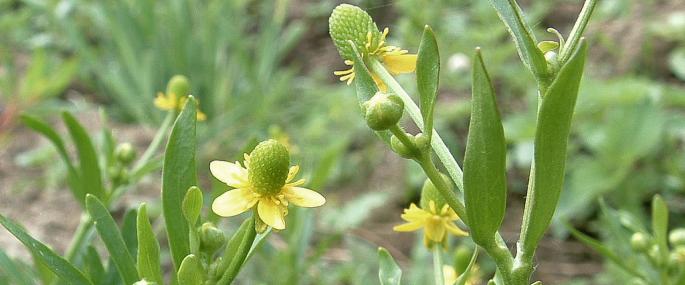2011-05-05 13:02
Scientific Name:
Ranunculus sceleratus
Celery-leaved Buttercup is a common plant of damp places, wet meadows and the muddy edges of ponds and ditches, clinging on even if the pond has dried out. Its tiny flowers appear from May to September.
How to identify:
Celery-leaved Buttercup can be recognised by its yellow flowers with relatively small petals, and its celery-like leaves which are divided into three lobes.
Where to find it:
Found throughout the country.
How people can help:
The Wildlife Trusts manage many grassland and wetland habitats sympathetically for the benefit of all kinds of wildlife. We are also working closely with farmers, landowners and developers to promote wildlife-friendly practices. We have a vision of a 'Living Landscape': a network of habitats and wildlife corridors across town and country, which are good for both wildlife and people. You can support this greener vision for the future by joining your local Wildlife Trust.
Statistics:
Height: up to 50cm
Conservation status:
Common.
Did you know?:
Although the name 'buttercup' is obvious considering the golden-yellow petals of the Ranunculaceae family, these flowers went by many other names before the 18th century, including 'Goldweed', 'Soldier Buttons', 'Kingcup' and 'Crowpeckle' which is still in use today.
Seasons:
Spring
Summer
Autumn
Image:
